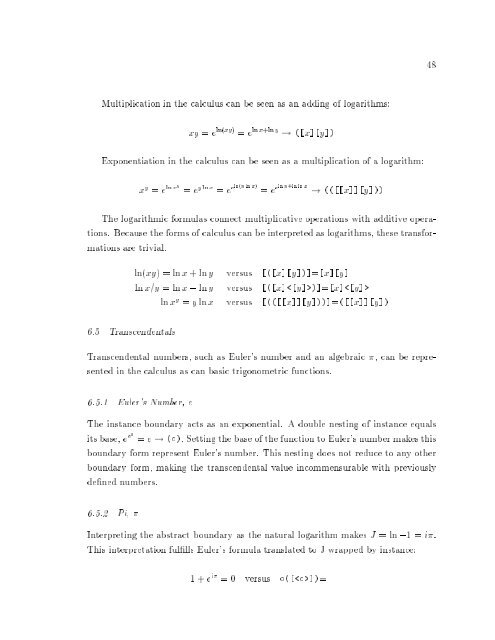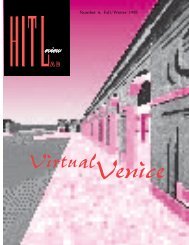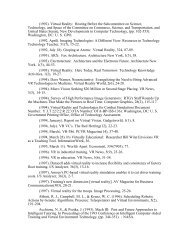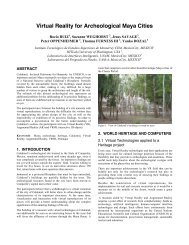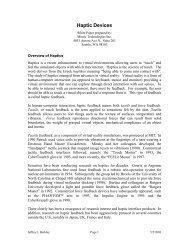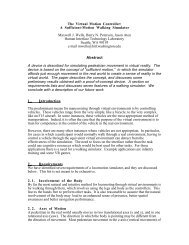A Calculus of Number Based on Spatial Forms - University of ...
A Calculus of Number Based on Spatial Forms - University of ...
A Calculus of Number Based on Spatial Forms - University of ...
Create successful ePaper yourself
Turn your PDF publications into a flip-book with our unique Google optimized e-Paper software.
48<br />
Multiplicati<strong>on</strong> in the calculus can be seen as an adding <str<strong>on</strong>g>of</str<strong>on</strong>g> logarithms:<br />
xy = e ln(xy) = e ln x+ln y ! ([x][y])<br />
Exp<strong>on</strong>entiati<strong>on</strong> in the calculus can be seen as a multiplicati<strong>on</strong> <str<strong>on</strong>g>of</str<strong>on</strong>g> a logarithm:<br />
x y = e ln xy = e y ln x = e eln(y ln x) = e eln y+ln ln x ! (([[x]][y]))<br />
The logarithmic formulas c<strong>on</strong>nect multiplicative operati<strong>on</strong>s with additive operati<strong>on</strong>s.<br />
Because the forms <str<strong>on</strong>g>of</str<strong>on</strong>g> calculus can be interpreted as logarithms, these transformati<strong>on</strong>s<br />
are trivial.<br />
ln(xy) =lnx+lny versus [([x][y])]=[x][y]<br />
ln x=y =lnx,ln y versus [([x])]=[x]<br />
ln x y = y ln x versus [(([[x]][y]))]=([[x]][y])<br />
6.5 Transcendentals<br />
Transcendental numbers, such as Euler's number and an algebraic , can be represented<br />
in the calculus as can basic trig<strong>on</strong>ometric functi<strong>on</strong>s.<br />
6.5.1 Euler's <str<strong>on</strong>g>Number</str<strong>on</strong>g>, e<br />
The instance boundary acts as an exp<strong>on</strong>ential. A double nesting <str<strong>on</strong>g>of</str<strong>on</strong>g> instance equals<br />
its base, e e0 = e ! (): Setting the base <str<strong>on</strong>g>of</str<strong>on</strong>g> the functi<strong>on</strong> to Euler's number makes this<br />
boundary form represent Euler's number. This nesting does not reduce to any other<br />
boundary form, making the transcendental value incommensurable with previously<br />
dened numbers.<br />
6.5.2 Pi, <br />
Interpreting the abstract boundary as the natural logarithm makes J =ln,1=i.<br />
This interpretati<strong>on</strong> fullls Euler's formula translated to J wrapped by instance:<br />
1+e i =0 versus ([])=


